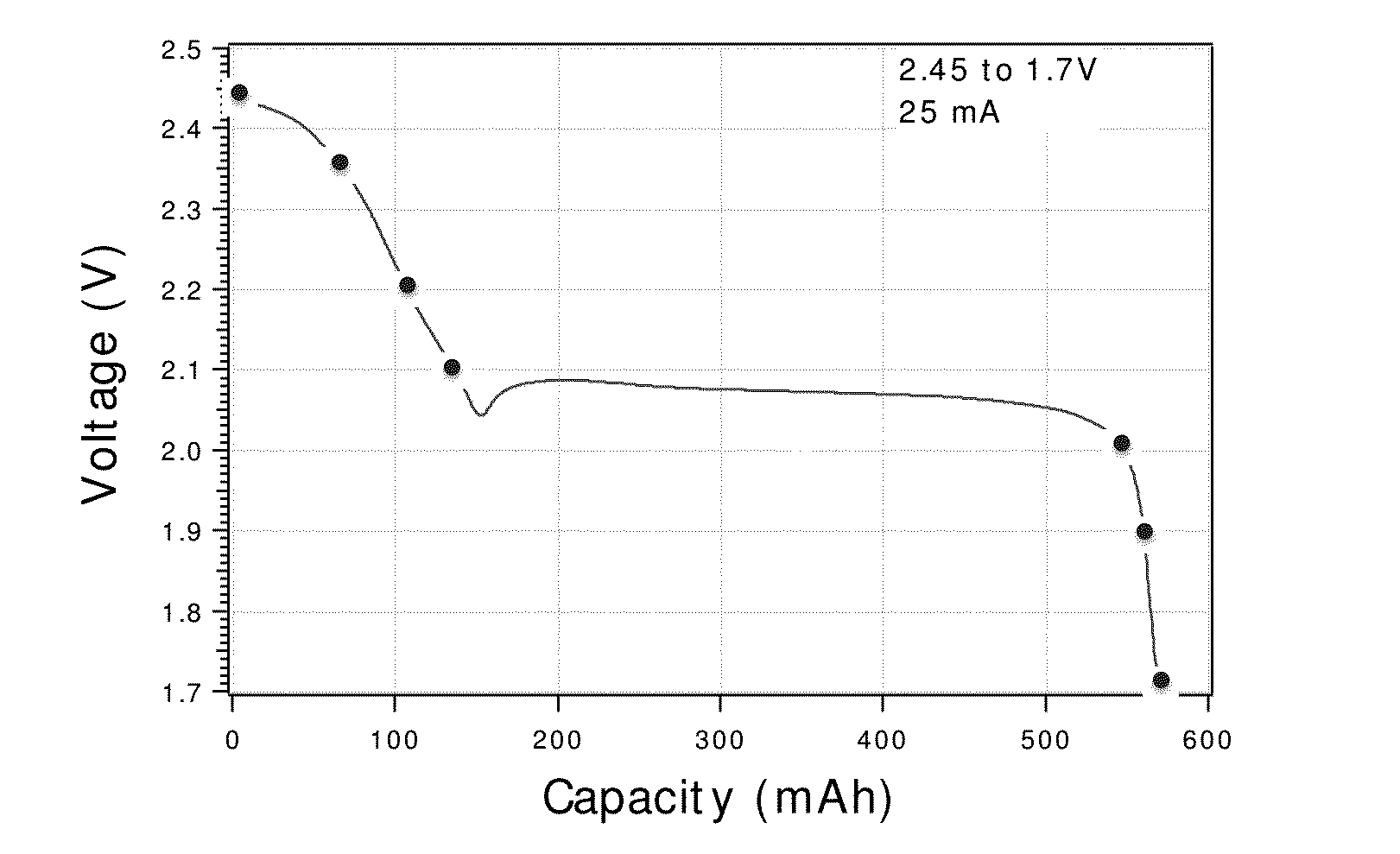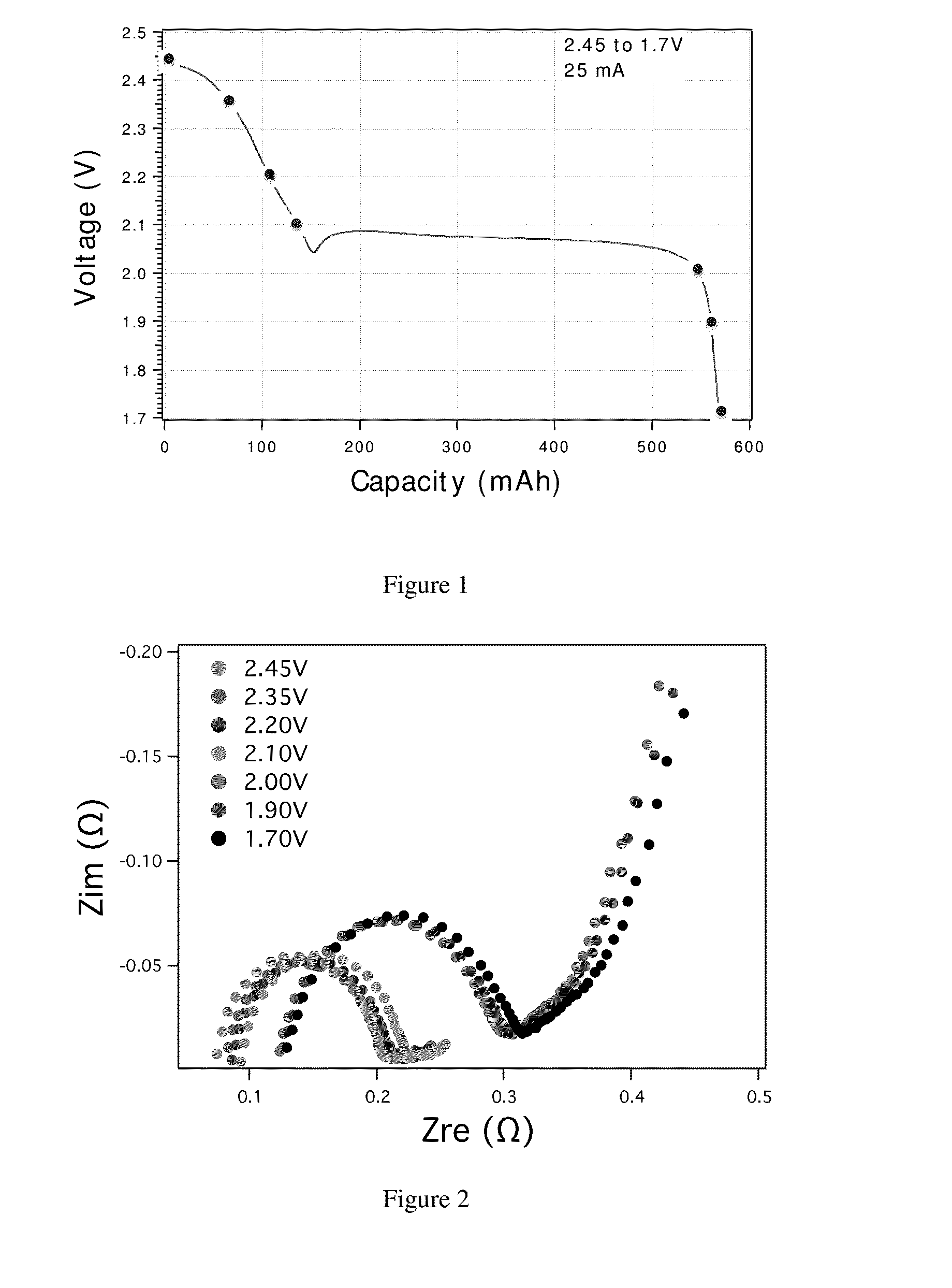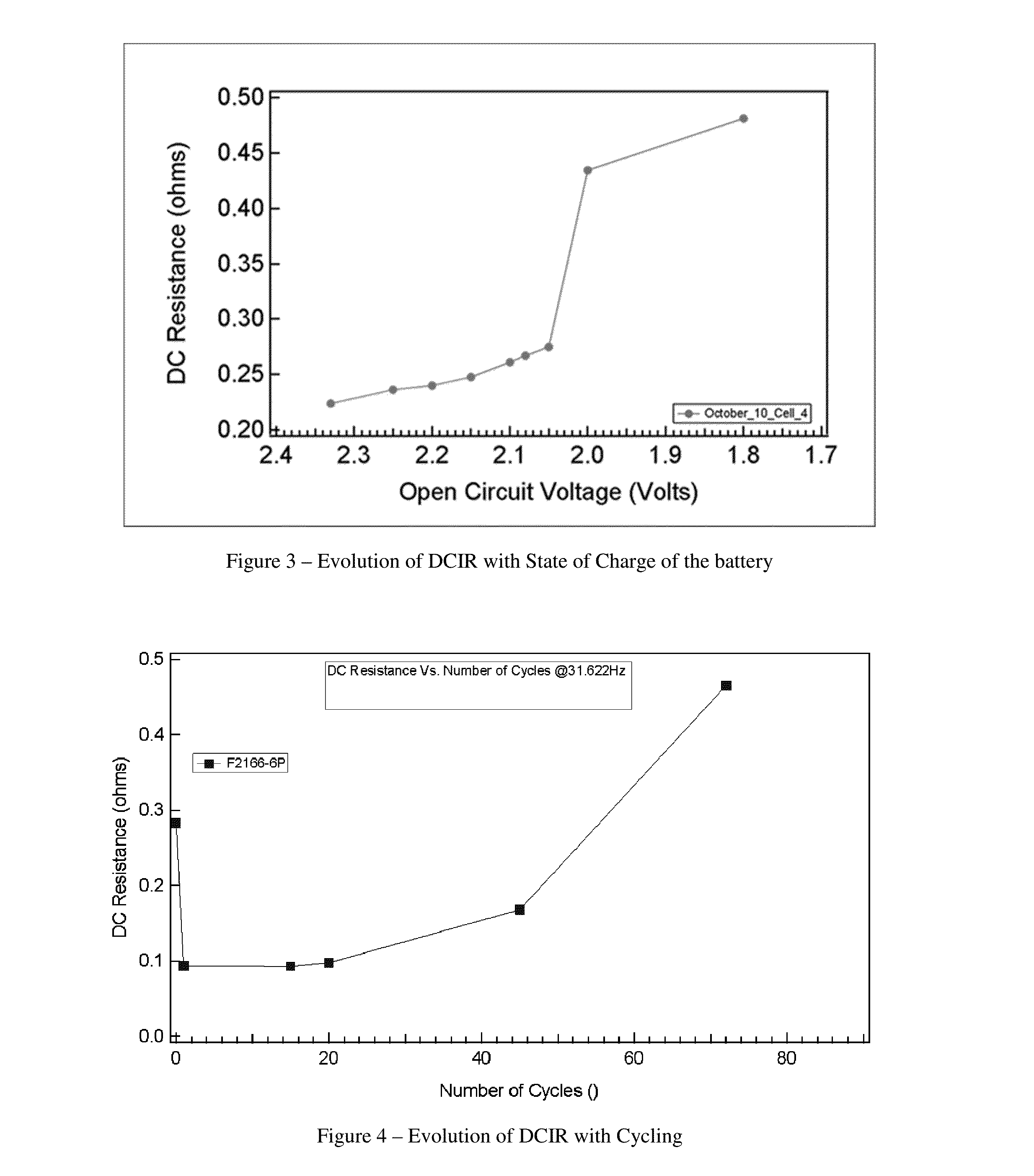Charge control and termination of lithium sulfur cells and fuel gauging systems and methods
a lithium sulfur cell and fuel gauging technology, applied in secondary cell servicing/maintenance, cell components, instruments, etc., can solve the problems of cathode active materials, discharge rates may affect the cycle life of rechargeable batteries, and limited cycle li
- Summary
- Abstract
- Description
- Claims
- Application Information
AI Technical Summary
Benefits of technology
Problems solved by technology
Method used
Image
Examples
Embodiment Construction
[0029]Before describing several exemplary embodiments of the invention, it is to be understood that the invention is not limited to the details of construction or process steps set forth in the following description. The invention is capable of other embodiments and of being practiced or being carried out in various ways.
[0030]Since voltage, temperature and resistance change linearly with the state of charge (SOC), continuous monitoring of SOC is difficult. In addition, because of the relatively flat second discharge plateau (as shown in FIG. 1), correlating SOC with Open Cell Voltage (OCV) is difficult, if nearly impossible.
[0031]The present invention makes use of Electrochemical Impedance Spectroscopy (EIS) to identify unique electrochemical changes that occur during the charge and discharge process of the lithium sulfur cell. FIG. 1 depicts the Nyquist plots showing impedance spectra as a function of discharge voltage. After 2V, the measured impedance spectra showed a noticeable ...
PUM
| Property | Measurement | Unit |
|---|---|---|
| voltages | aaaaa | aaaaa |
| voltage | aaaaa | aaaaa |
| capacitance | aaaaa | aaaaa |
Abstract
Description
Claims
Application Information
 Login to View More
Login to View More - R&D Engineer
- R&D Manager
- IP Professional
- Industry Leading Data Capabilities
- Powerful AI technology
- Patent DNA Extraction
Browse by: Latest US Patents, China's latest patents, Technical Efficacy Thesaurus, Application Domain, Technology Topic, Popular Technical Reports.
© 2024 PatSnap. All rights reserved.Legal|Privacy policy|Modern Slavery Act Transparency Statement|Sitemap|About US| Contact US: help@patsnap.com










